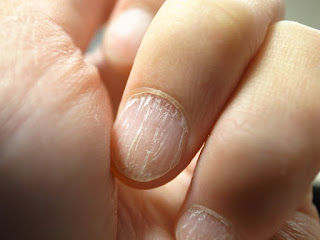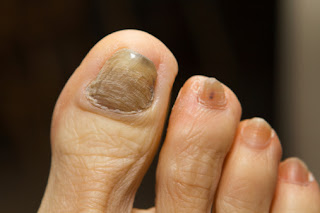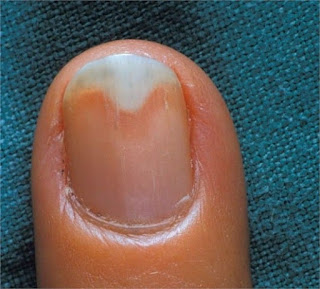Onycholysis
Onycholysis: Understanding the Causes and Symptoms of Nail Separation
Nails are an important part of our bodies and are often used to reflect our overall health. However, sometimes our nails can develop conditions that can cause them to change appearance or become unhealthy. One such condition is onycholysis, which is the separation of the nail from the nail bed.
 |
| White on The Edge Nail Cuticle |
What is Onycholysis?
Onycholysis is a medical condition in which the nail separates from the nail bed, causing the nail to become loose and lifted from the surrounding skin. This can occur in one or multiple nails and can affect both fingernails and toenails. The separation can range from a small portion of the nail to the entire nail.
 |
| Onycholysis Nail |
beauty, beautyblogger, beautyblog, beautyful, beautyguru, beautyqueen, beautycare, beautyaddict, beautytips, beautyandthebeast, beautyproducts, BeautySalon, beautybloggers, beautyjunkie, beautygram, beautyofnature, beautylover, beautygirl, beautymakeup, beautyphotography, beautylaunchpad, beautyvlogger, beautycommunity, beautyfull, beautyblender, beautyproduct, beautys, beautyshoot, beautyskin, beautybox nails, nail, nailart, nailpolish, nailswag, nailstagram, naildesign, nailsofinstagram, nailsart, nailsoftheday, nailporn, nails2inspire, nailsalon, nailedit, nailartist, nailtech, nailsonfleek, naildesigns, nailsdid, NailStyle, nailaddict, nailfashion, nailsdesign, nailsdone, nailartaddict, nailsofig, nailpro, nailartclub, nailsmagazine, nailpromote
Causes of Onycholysis
There are several factors that can contribute to the development of onycholysis, including:
- Fungal infections: Fungal infections, such as athlete's foot, can cause onycholysis. The fungal infection can weaken the bond between the nail and the nail bed, causing the nail to separate.
- Trauma: Injuries to the nails, such as repeatedly stubbing a toe or banging a fingernail, can cause onycholysis.
- Exposure to chemicals: Exposure to chemicals, such as harsh detergents, can weaken the bond between the nail and the nail bed, causing the nail to separate.
- Psoriasis: This autoimmune disease can cause the nails to become separated from the nail bed.
- Thyroid conditions: Hypothyroidism and hyperthyroidism can cause changes in the nails, including onycholysis.
Symptoms of Onycholysis
The most common symptom of onycholysis is a lifted or separated nail. Other symptoms may include:
Nail discoloration:
The nail may turn yellow, green, or white in color.
 |
| Nail discoloration |
Nail thickening:
The nail may become thicker than normal.
 |
| Nail thickening |
Nail fragility:
The nail may become brittle and break easily.
 |
| Nail fragility |
Pain:
In severe cases, onycholysis can cause pain in the affected area.
 |
| Pain Nail |
Treatment of Onycholysis
The treatment of onycholysis depends on the underlying cause. For example, if the condition is caused by a fungal infection, antifungal medication may be prescribed. If the condition is caused by exposure to chemicals, avoiding the irritant and using moisturizing products can help.
 |
| Nail Treatment |
It is important to seek treatment for onycholysis in order to prevent the condition from becoming worse and causing additional damage to the nails. In severe cases, surgery may be required to correct the problem.
Conclusion
In conclusion, onycholysis is a medical condition that occurs when the nail separates from the nail bed. There are several causes of onycholysis, including fungal infections, trauma, exposure to chemicals, and autoimmune diseases. The most common symptom of onycholysis is a lifted or separated nail, and treatment depends on the underlying cause. If you are experiencing symptoms of onycholysis, it is important to seek treatment in order to prevent additional damage to the nails.

Post a Comment for " Onycholysis"